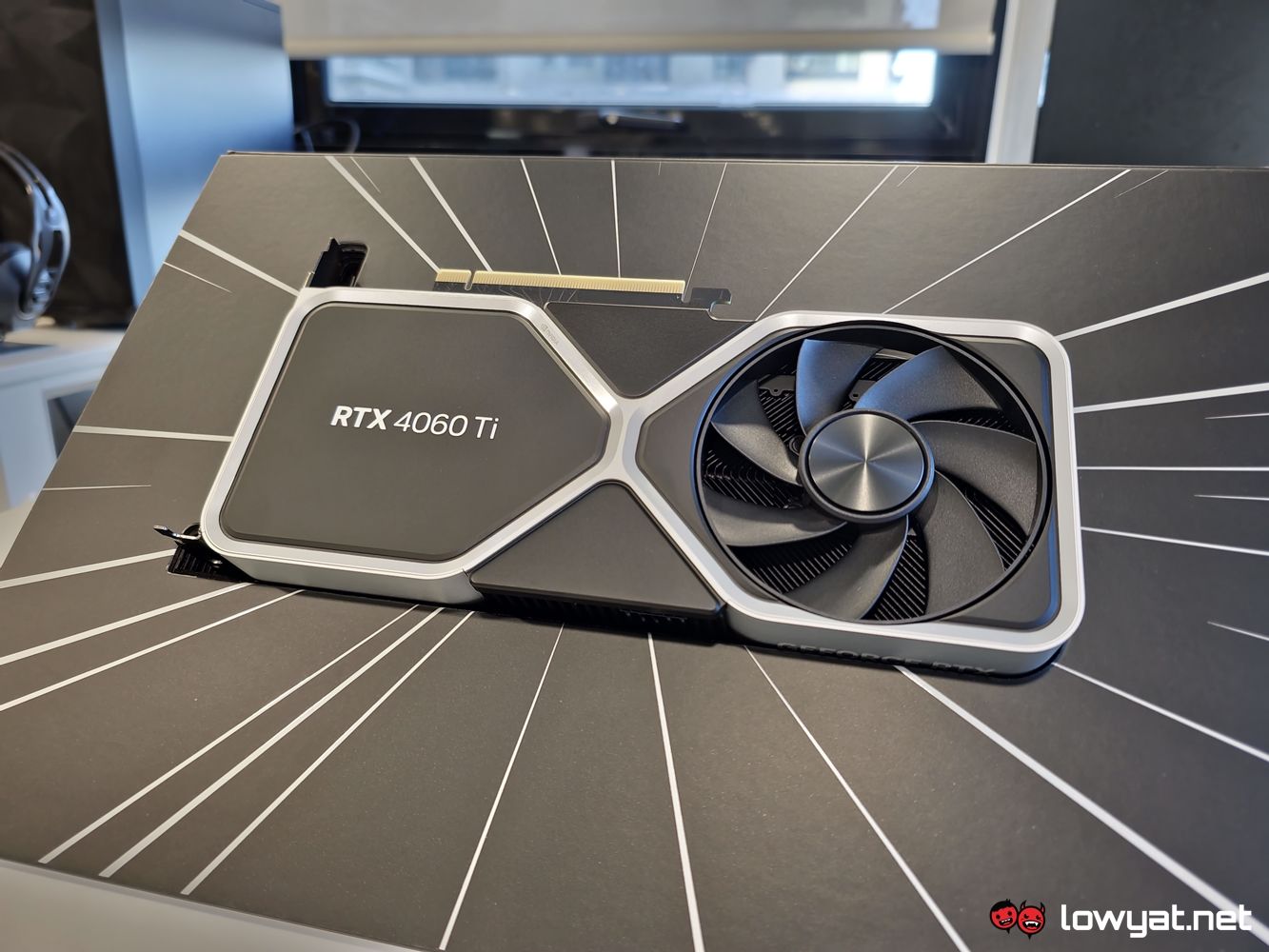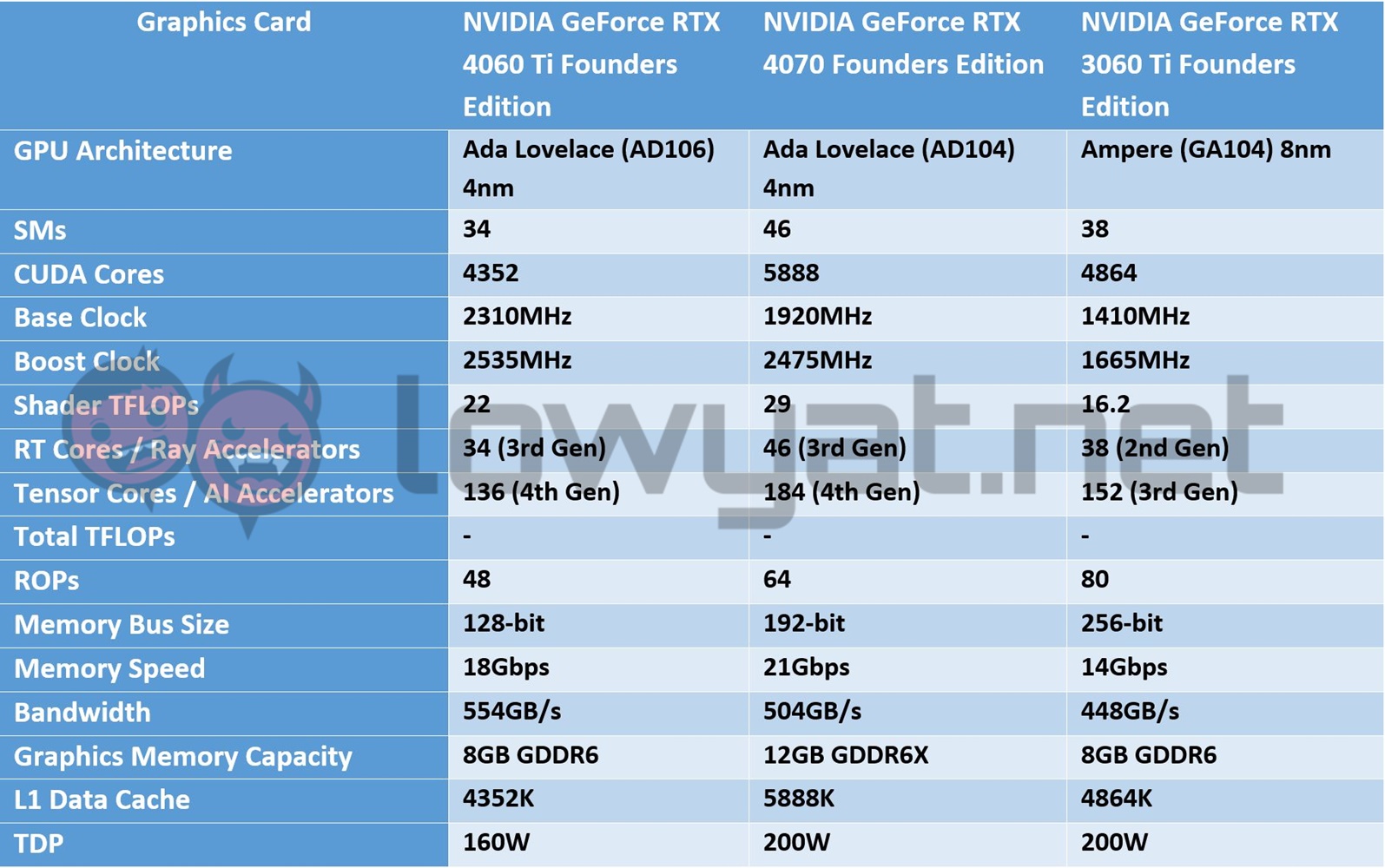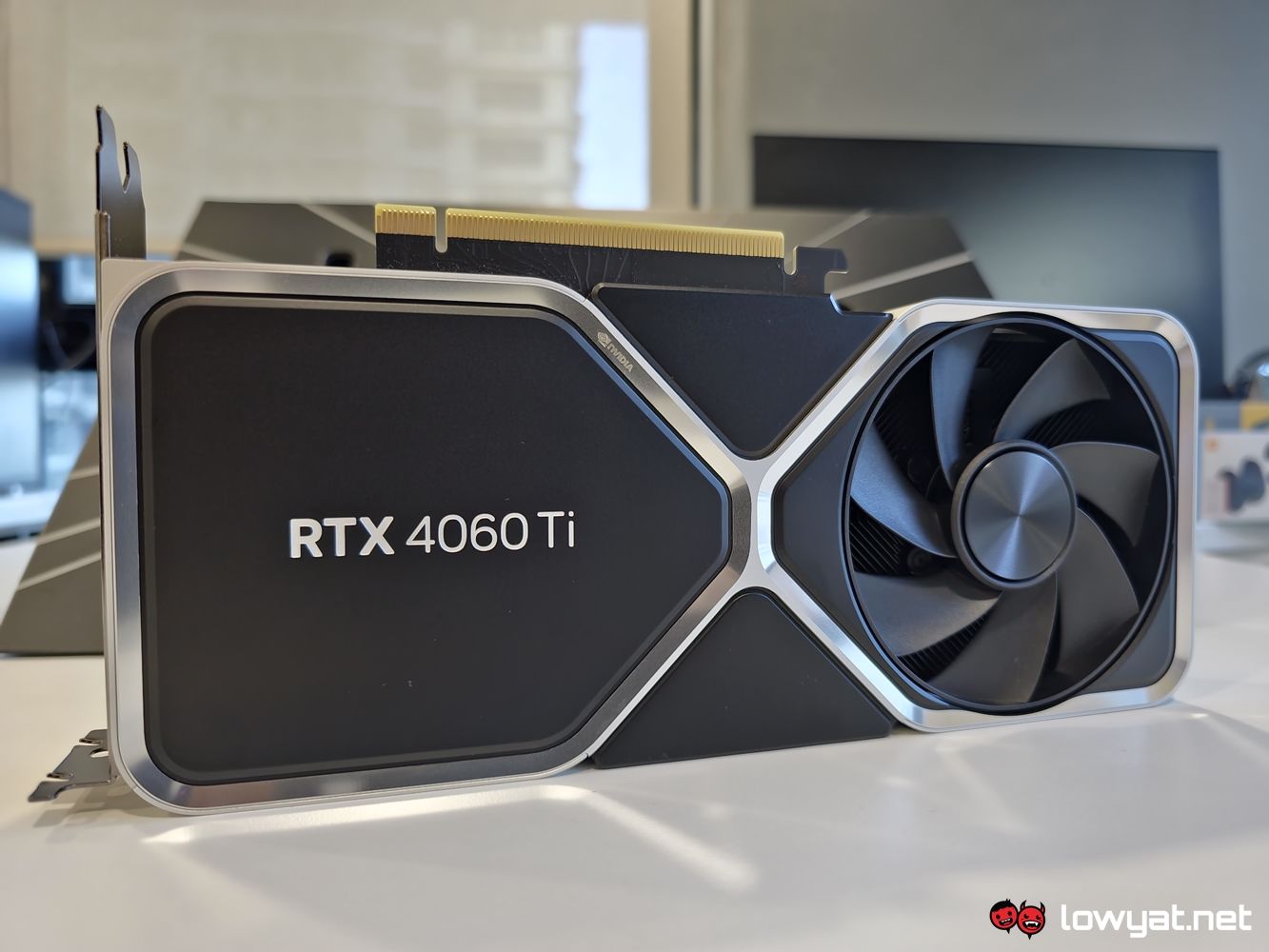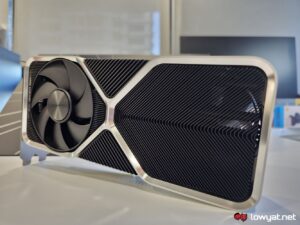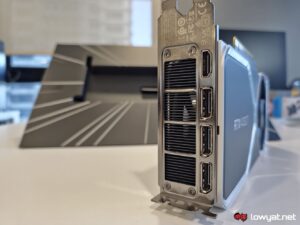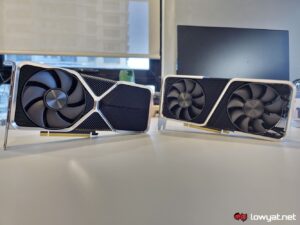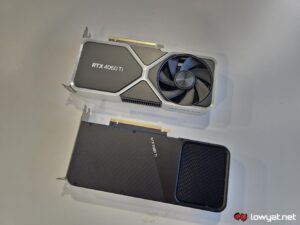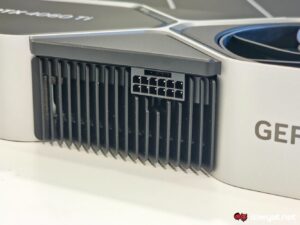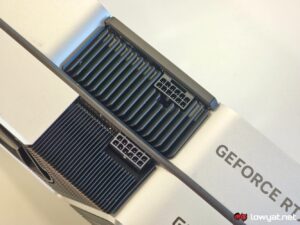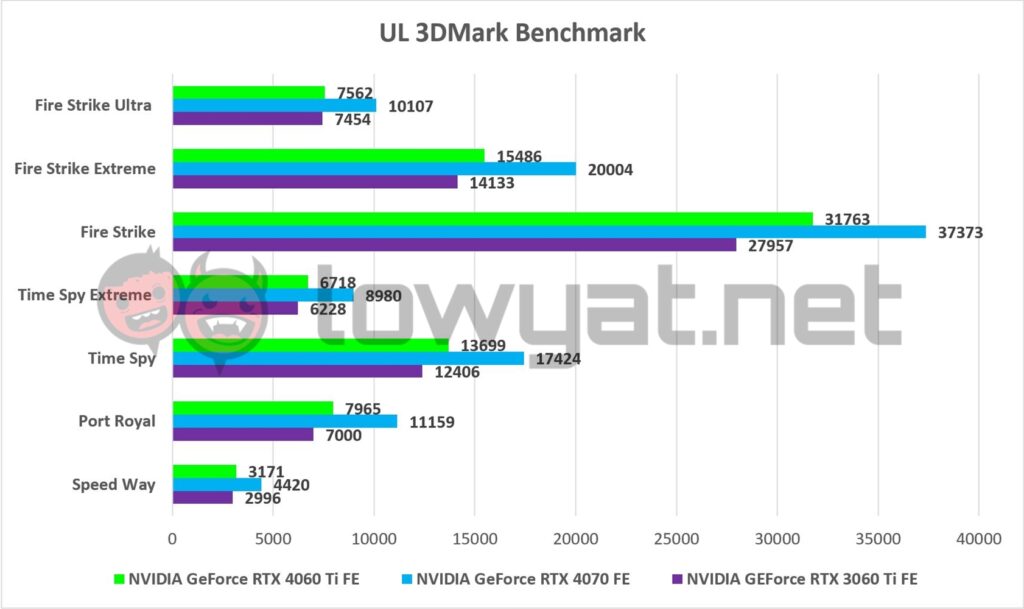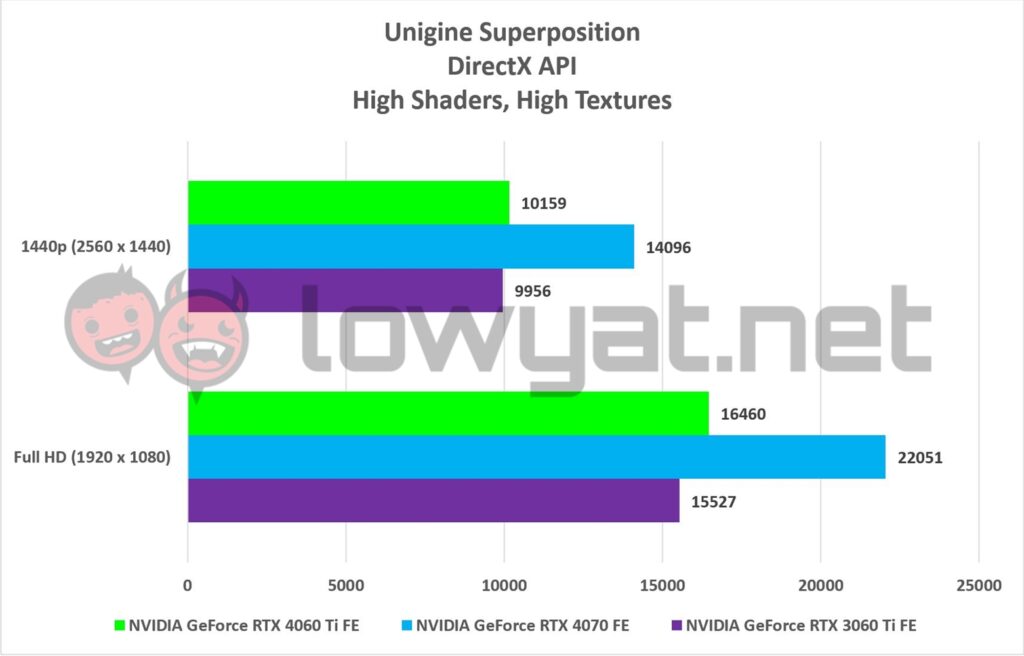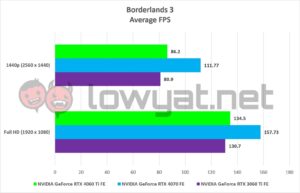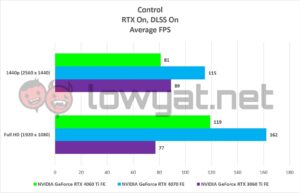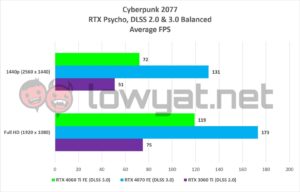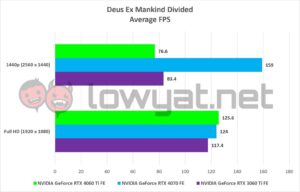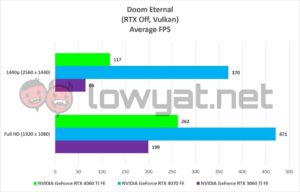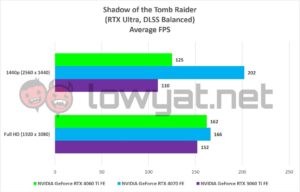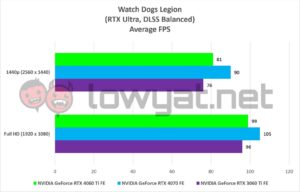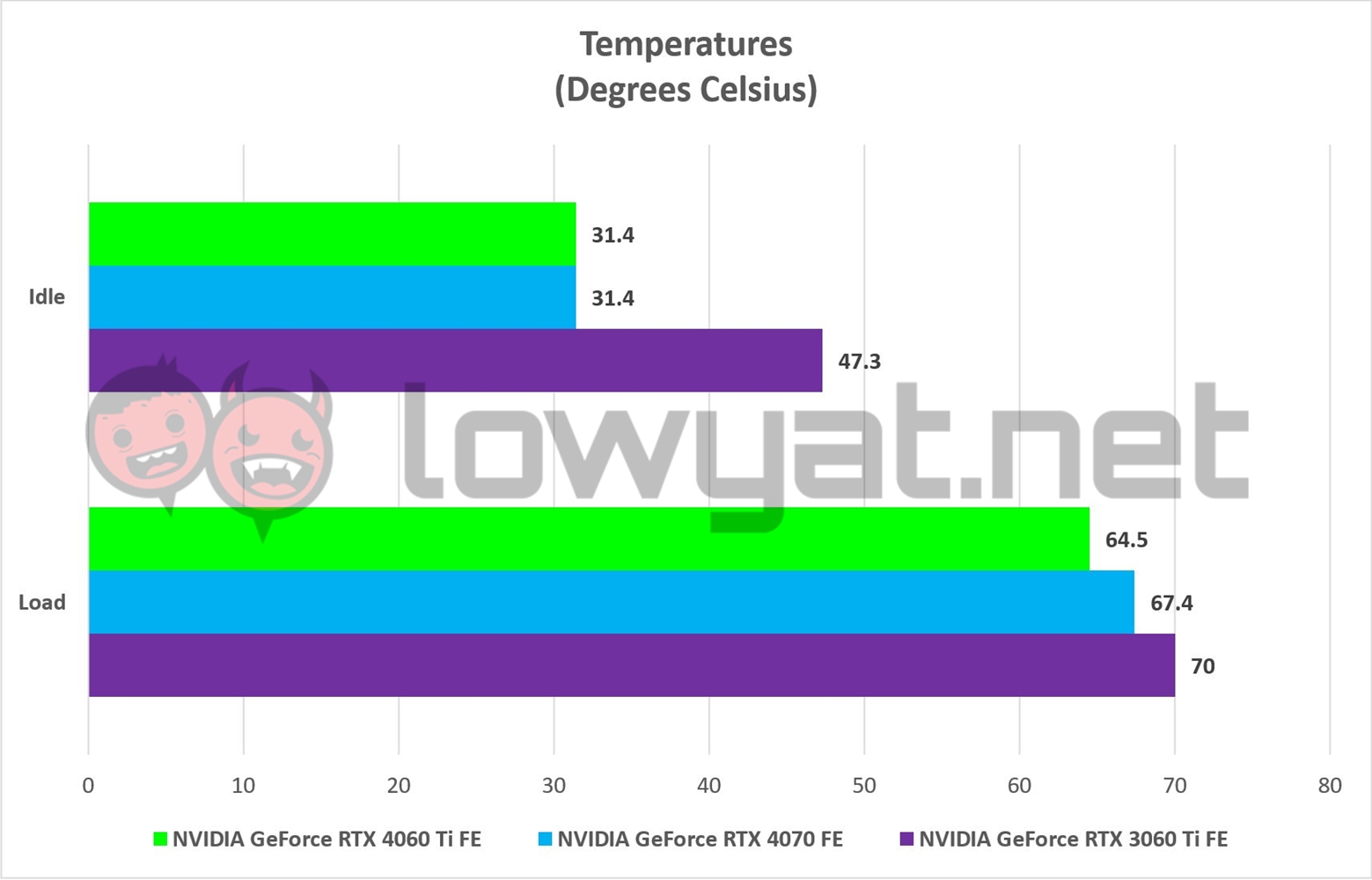After what feels like an eternity, NVIDIA has finally covered all the bases of Ada Lovelace with the launch of the GeForce RTX 4060 family of GPUs. The lineup comprises three SKUs and in this review, we’re taking a look at what I essentially call the middle child of the lineup, the RTX 4060 Ti Founders Edition (FE).
So, without wasting any more time, let’s dive into what makes this card unique.
Specifications
Design
Like all FE cards, the RTX 4060 Ti FE is built around NVIDIA’s iDual Axis Flowthrough inverted-fans reference design for its cooler shroud, which has proven time and time again to actually be more effective at cooling the card than some of the cooling solutions its AIB partners. On that note, the cooler shroud retains the same size and design as the RTX 4070 FE, the main difference between the two being the shinier, near-mirror sheen that this card takes on. Beyond that, you get the
Beneath the cooler shroud, the RTX 4060 Ti FE and all variations of GPU are powered by the 4nm Ada Lovelace and in this case, the lower-range AD106. It’s also the second cheapest Lovelace GPU on market with a starting SRP of RM2050 – the non-Ti version of the card starts at RM1539 – and at that price, the cards with the same 3rd generation RT Cores, 4th generation Tensor cores, but above all else, access to NVIDIA’s coveted DLSS 3 AI upscaling technology.
Another physical feature that is present on the RTX 4060 Ti FE, in spite of the card’s much, much lower 160W TDP, NVIDIA has stuck to its guns and equipped it with its proprietary 12VHPWR, 16-pin PCIe Gen5 port. Unlike the RTX 4070, though, the adapter cable that comes with the card only has a single 8-pin connector at one end. Honestly, I find it funny that the GPU brand is only doing this now, when it could have done so with the RTX 4070.
Ports-wise, the RTX 4060 Ti FE comes with the same three DisplayPort 1.4a ports and one HDMI 2.1 port for 8K resolution output.
Testbench
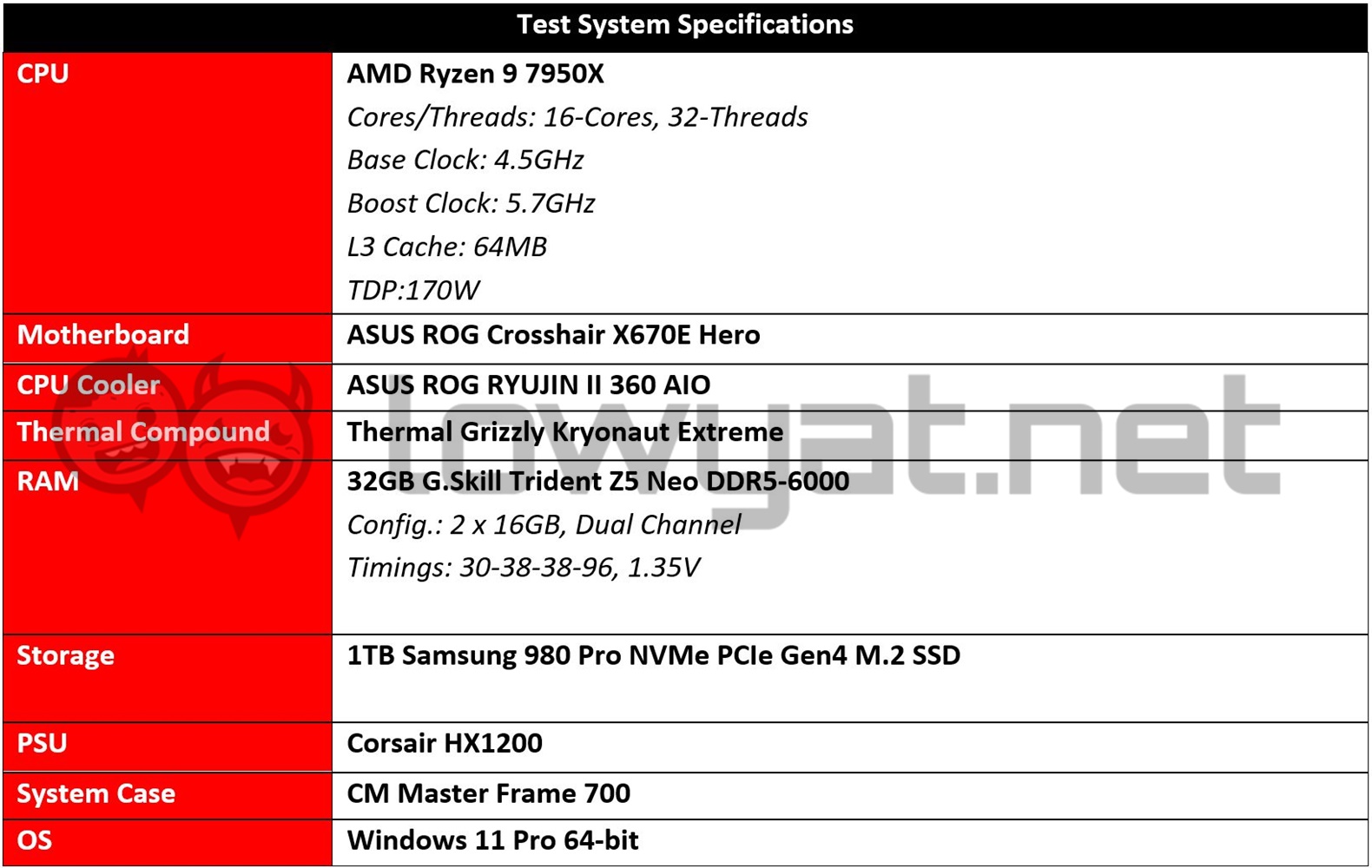 As a point of reference, I am benching the RTX 4060 Ti FE against the RTX 4070 FE and the GPU’s direct predecessor, the RTX 3060 Ti FE. The testbench I am using is, as you can see from the table above, an AMD Ryzen system and more specifically, a Ryzen 9 7950X with an X670E motherboard. Further, I will be testing the system with 32GB DDR5-6000 RAM from G.Skill.
As a point of reference, I am benching the RTX 4060 Ti FE against the RTX 4070 FE and the GPU’s direct predecessor, the RTX 3060 Ti FE. The testbench I am using is, as you can see from the table above, an AMD Ryzen system and more specifically, a Ryzen 9 7950X with an X670E motherboard. Further, I will be testing the system with 32GB DDR5-6000 RAM from G.Skill.
The synthetic benchmarks remain the same as previous reviews, while real-world benchmarks will be limited to the two resolutions of 1440p and Full HD. That being said, this card was technically made for gaming comfortably at the latter resolution.
Benchmarks
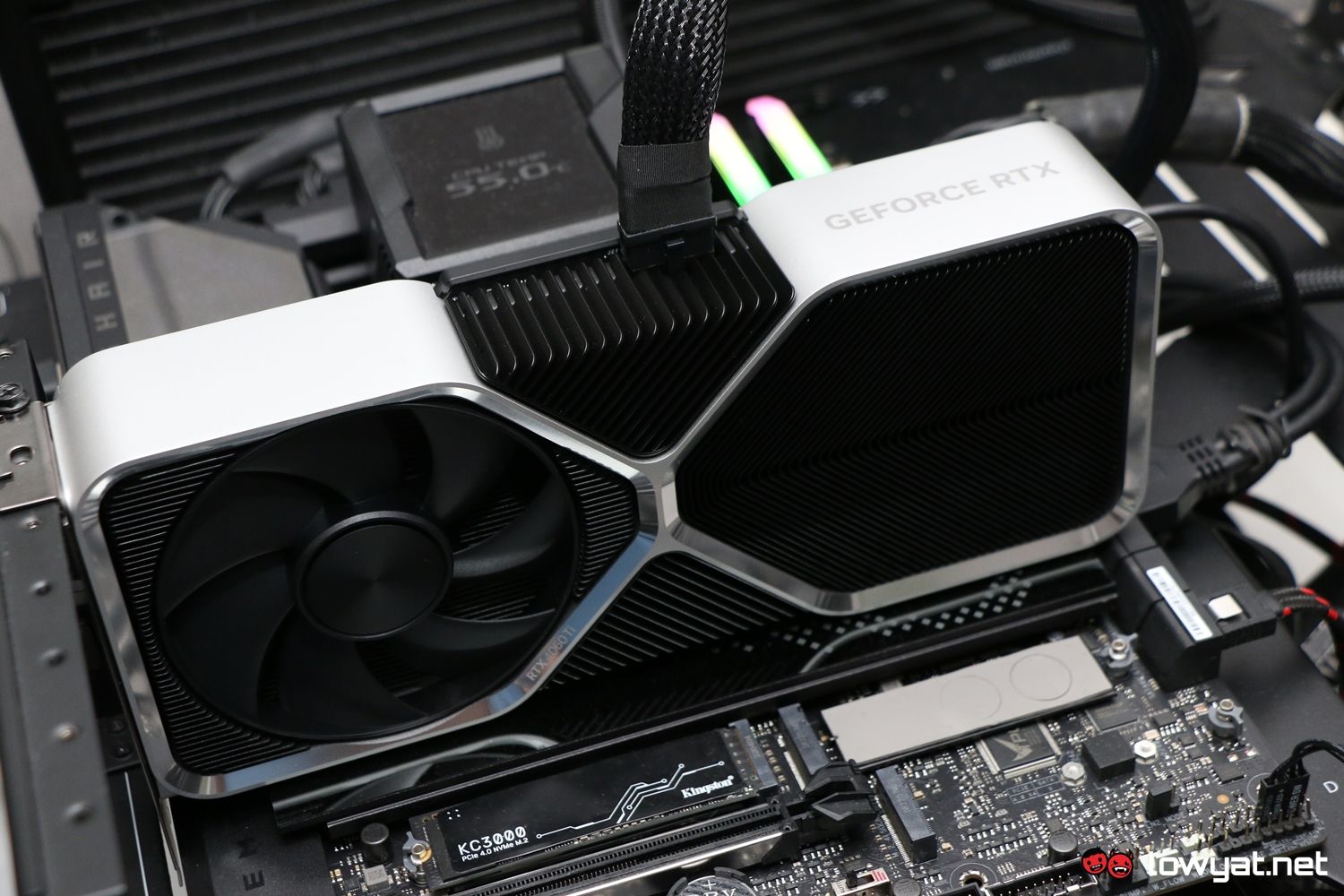 Right from the very start, the RTX 4060 Ti FE shows a performance uplift against the last generation’s RTX 3060 Ti FE. The improved performance can be seen in portions of the synthetic benchmarks that are less 4K-focused, such as 3DMark’s Time Spy and Fire Strike series of tests.
Right from the very start, the RTX 4060 Ti FE shows a performance uplift against the last generation’s RTX 3060 Ti FE. The improved performance can be seen in portions of the synthetic benchmarks that are less 4K-focused, such as 3DMark’s Time Spy and Fire Strike series of tests.
As I mentioned prior, the RTX 4060 Ti FE is clearly designed for Full HD gaming and to some degree, 1440p gaming. In real-world testing, the card is show pulling ahead of the RTX 3060 Ti FE in every title, including the ones that do not support DLSS 3. Across the board, the card easily ran them with average framerates above the 70 fps mark.
On the subject of DLSS 3, I should probably mention that Cyberpunk 2077 currently suffers from some stuttering issues with the RTX 4060 Ti and more specifically, when the card is paired with a Ryzen 7000 Series system. Don’t worry, NVIDIA is well aware of the situation and has said that a patch for the issue will be made available soon.
Temperature and Power Consumption
The operating temperature of the RTX 4060 Ti FE isn’t breathtakingly surprising. In a stress test, the GPU peaked at 64.5°C, and that is after letting the card run for more than 10 hour in my lab, with the ambient temperature kept at a comfortable 20°C.
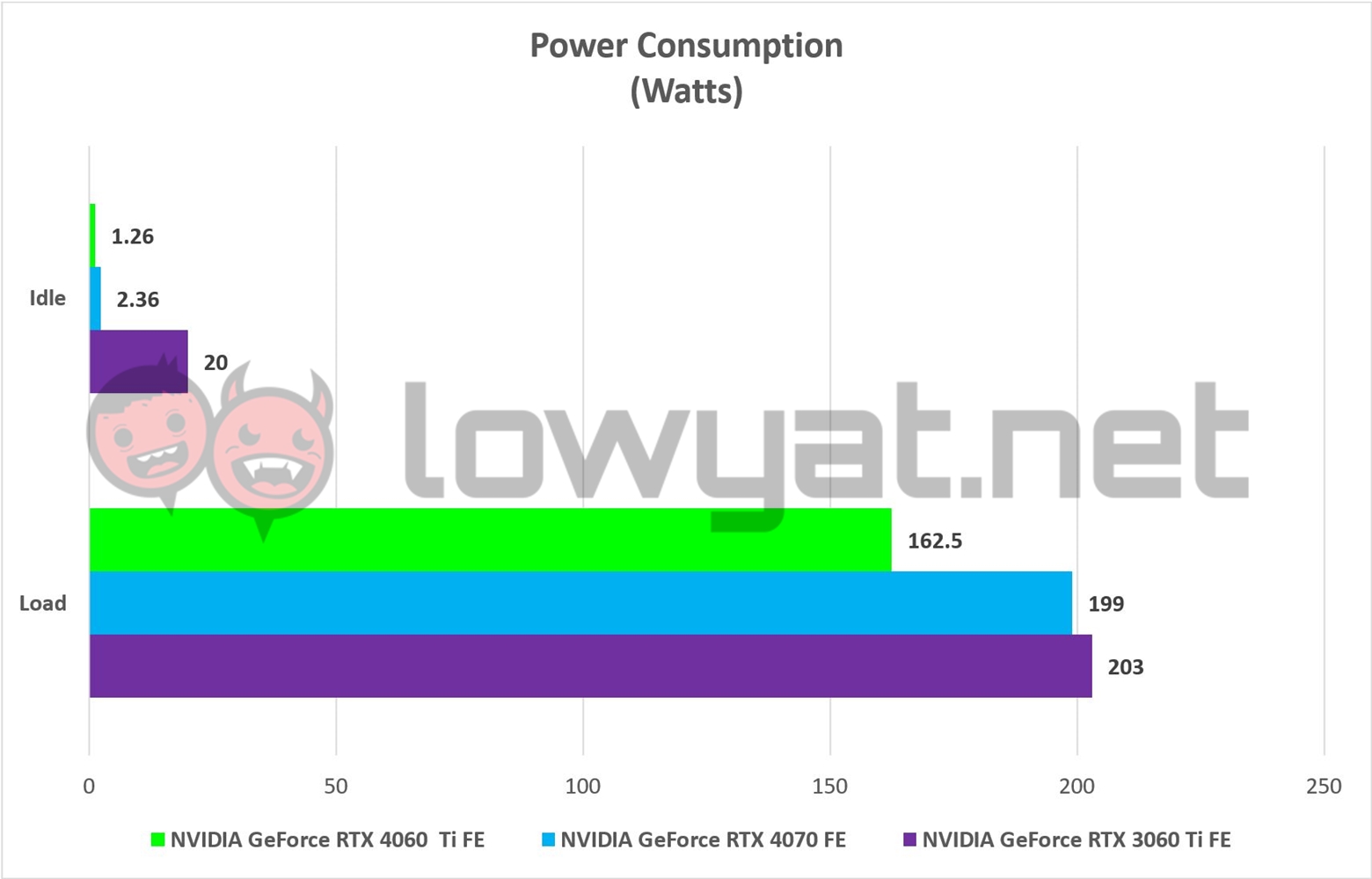 What does impress me is the RTX 3060 Ti FE’s maximum power consumption of 162.5W, which is just 2.5W more than its rated TGP. It’s an average 40W lower than the RTX 3060 Ti FE and indicates that the card’s performance-per-watt is is a generation-over-generation improvement, and it is great to see NVIDIA able to deliver such power.
What does impress me is the RTX 3060 Ti FE’s maximum power consumption of 162.5W, which is just 2.5W more than its rated TGP. It’s an average 40W lower than the RTX 3060 Ti FE and indicates that the card’s performance-per-watt is is a generation-over-generation improvement, and it is great to see NVIDIA able to deliver such power.
Conclusion
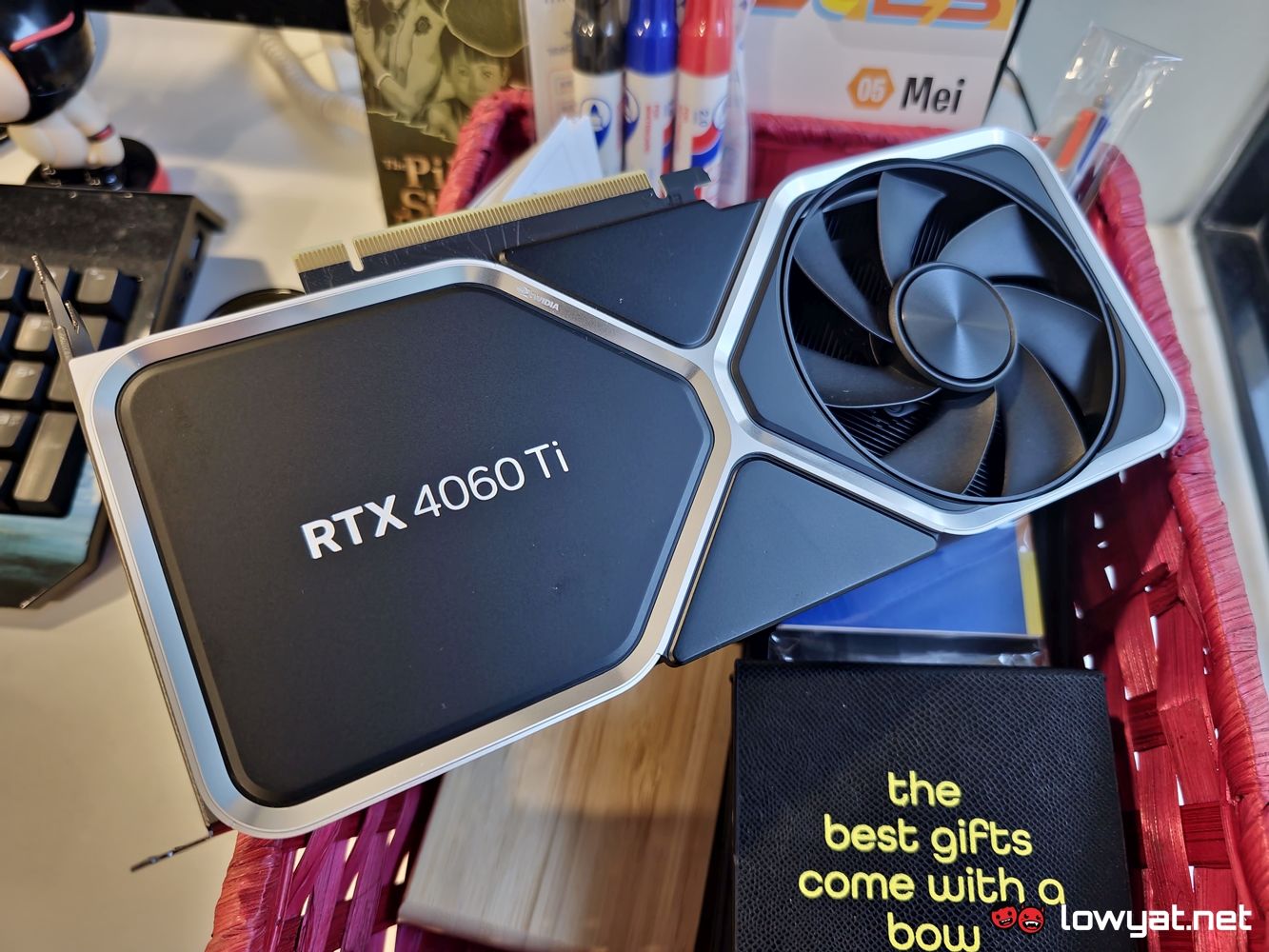 At this stage, I believe I can say that the NVIDIA GeForce RTX 4060 Ti FE is the entry-level graphics card that the GPU brand sorely needs to regain its flock of gamers that are looking to hop on the DLSS 3 and Ada Lovelace bandwagon without technically having to deepen the void in their wallet or sell a kidney for. At a starting SRP of RM2050, it is currently the cheapest RTX 40 Series GPU, at least until the non-Ti RTX 4060 comes around in July.
At this stage, I believe I can say that the NVIDIA GeForce RTX 4060 Ti FE is the entry-level graphics card that the GPU brand sorely needs to regain its flock of gamers that are looking to hop on the DLSS 3 and Ada Lovelace bandwagon without technically having to deepen the void in their wallet or sell a kidney for. At a starting SRP of RM2050, it is currently the cheapest RTX 40 Series GPU, at least until the non-Ti RTX 4060 comes around in July.
On that note, there’s also the direct rival of the RTX 4060 Ti FE, the AMD Radeon RX 7600, which is another surprise because, truth be told, it wasn’t the card we were expecting Team Red to release in quick succession. To that end, I am going to reserve judgment on which entry-level GPU is king, but I will simply say this: if you’re coming up from the RTX 3060 Ti or older, you are guaranteed a significant performance uplift.
Follow us on Instagram, Facebook, Twitter or Telegram for more updates and breaking news.


